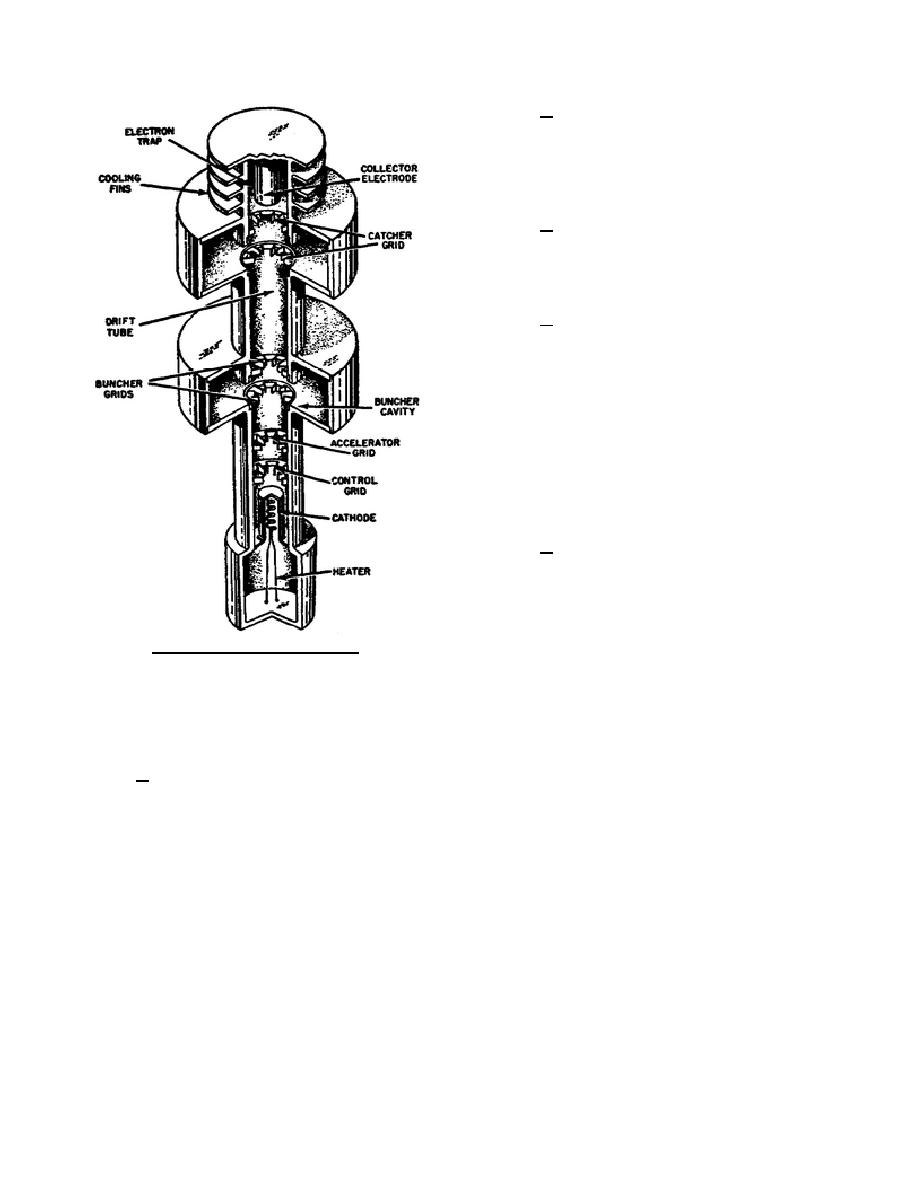
g. The collector electrode provides an
external path for the electrons to return to the
cathode.
1-4. TWO-CAVITY KLYSTRON
a. A two-cavity klystron is shown in figure
5. The elements of this klystron are usually at
ground potential, with the exception of the cathode
and control grid, which are below ground potential.
b. In normal operation, the electron beam
is passed through the buncher grids and is velocity
modulated by the buncher cavity. As the beam
travels through the drift tube, the electrons are
bunched.
Bunching is completed before the
electrons pass through the first grid of the catcher
cavity. The electrons will now pass through the
catcher grids in bunches at the input frequency. As
the bunches of electrons pass through the catcher
grids, they are slowed down, or decelerated, causing
the bunches to give up energy to the catcher cavity.
c. The klystron is an amplifier because it
takes in low-level energy at the buncher cavity and
delivers a higher level output at the catcher cavity.
If it is adjusted correctly, the klystron will oscillate
when a small amount of energy is taken from the
catcher cavity and coupled back to the buncher
Figure 5. Two-cavity klystron.
cavity.
These oscillations are the klystron
output signal; developed in the catcher cavity.
The cavities in the klystron are usually adjusted by an inductive tuning slug. Energy is coupled into the buncher
cavity and out of the catcher cavity by coupling loops. The orientation of the loop determines the amount of
coupling.
d. It is necessary to tune both resonant cavities of the klystron before it will operate properly, as well as
to insure that electron bunching is completed before the electrons pass through the catcher grids. This is
controlled by adjusting the negative cathode voltage. The adjusted voltage difference between the cathode and
the accelerator grid is the accelerating voltage, which causes the electrons to travel at the proper velocity so that
bunching occurs at the proper place. If bunching occurs too soon or too late, the klystron cannot deliver much
power because of collisions between electrons of different velocities.
344 L1
6


 Previous Page
Previous Page
